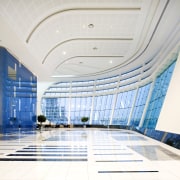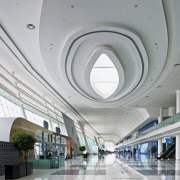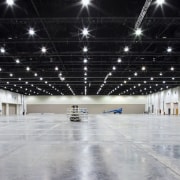Showpiece
The grand scale and dynamic, contemporary form of the new Abu Dhabi National Exhibition Centre reflect its international standing and the Government's visionary master plan
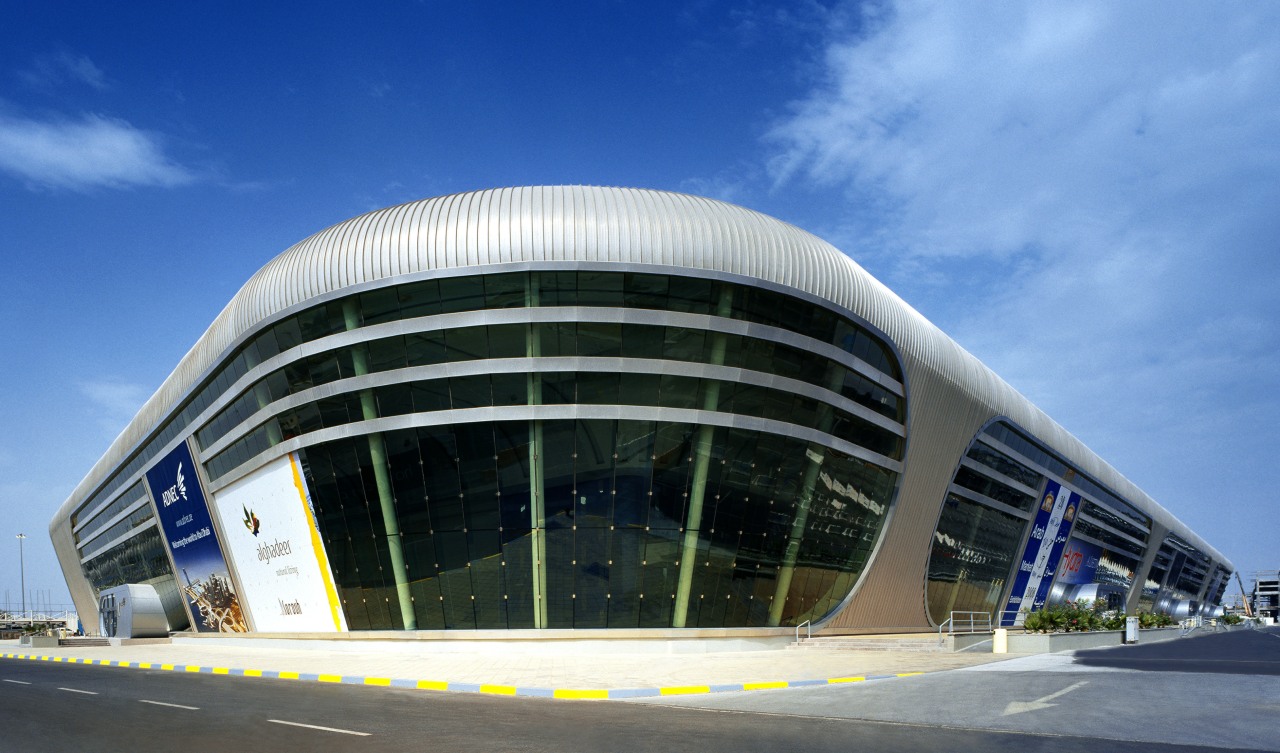
Positioned midway between East and West, the United Arab Emirates has for centuries been a major trading hub. Today, it retains that role but the nature of the trade is changing as the UAE repositions itself as the exhibition centre of the world.
For the government of Abu Dhabi the UAE capital city this has resulted in a commitment to provide a world-class exhibition centre and conference venue.
The master plan for the new 48ha Abu Dhabi National Exhibition Centre, designed and engineered by RMJM, provides 12 exhibition halls with associated front- and back-of-house facilities, a public concourse, signature tower, hotel, marina and a mixed-use lifestyle development to be known as Capital Centre. On completion, the development will provide 55,000m² of exhibition space, and cater to a million visitors annually, making it the largest exhibition venue in the Middle East.
Phase 1 of the development, which features on these pages, involved the refurbishment and extension of an existing grandstand, and the construction of new exhibition halls.
RMJM Dubai design director Gordon Affleck says the curved, fluid design was driven by both the hot climate and the need for a building that would reflect the visionary nature of the development.
"We felt the building needed to have a very dynamic, contemporary form, rather than a pastiche of styles or a themed approach," he says. "The design reinforces the contemporary thinking behind the development."
Phase 1 of the project presents one arm of what will eventually be a vast U-shaped building. Its moulded form is characterised by a sloping facade that features standing seam aluminium cladding punctuated by pod-shaped glazed elements, which echo the curve of the roof. Smaller versions of this shape create a series of entrances, providing both a physical and a visual buffer zone between the outdoors and indoors.
A large concourse inside the building provides an additional transition zone.
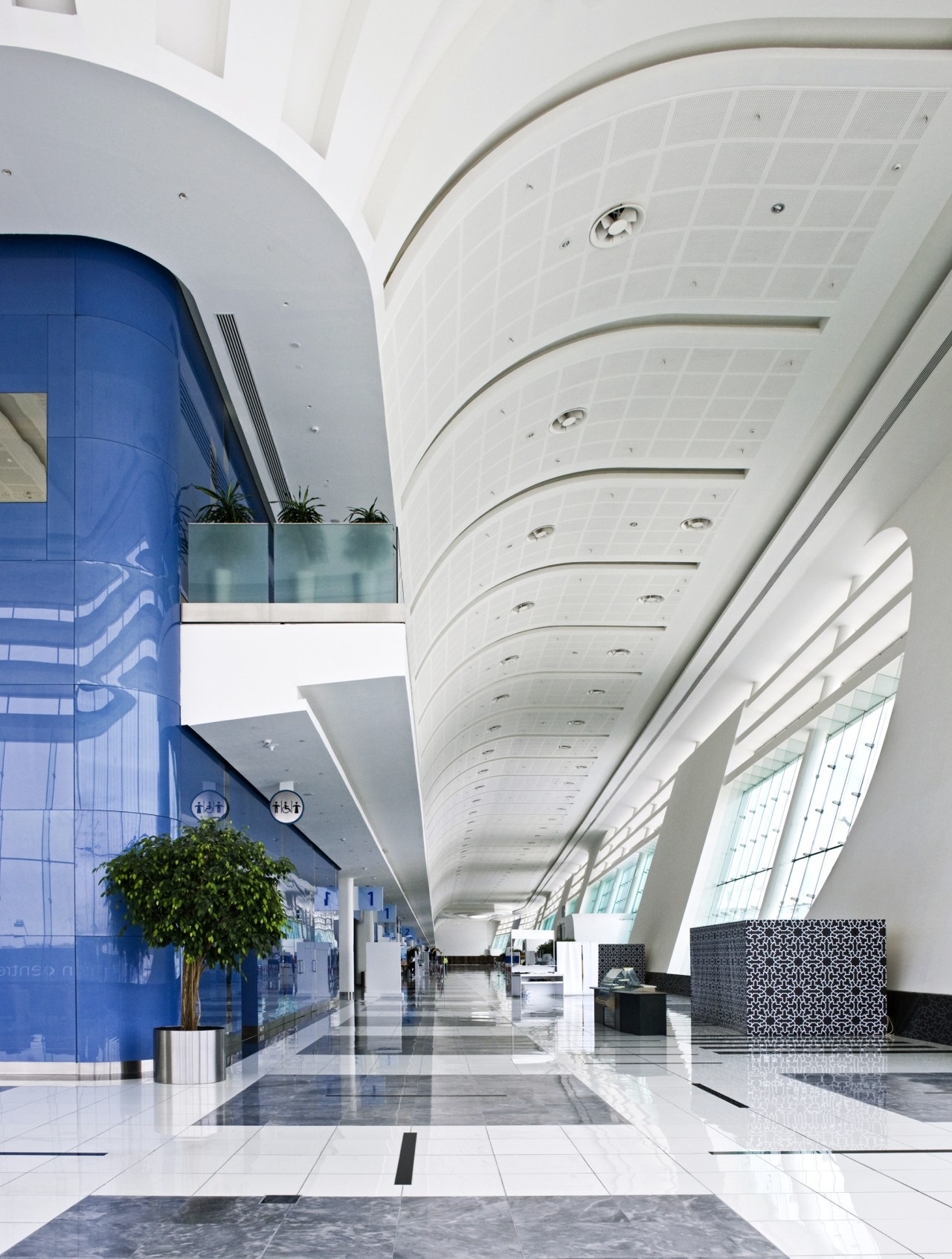
"This area was designed as an internal street," says Affleck. "It's a vibrant, animated area, which can also be used as an exhibition space. At 40m wide, it is particularly suited to high-end product launches that require maximum visibility. The picture windows are north-facing, to minimise solar gain and glare."
Large, elliptical skylights in the concourse allow additional daylight to illuminate the vast space.
The vibrancy of the street is enhanced by large, shiny blue pods that separate the internal street from the exhibition halls. The pods accommodate administration offices on the ground floor and hospitality suites on the first floor, which overlook the concourse.
"From the outside, the pods appear as buildings within a building," says RMJM interior design director Kevin McLachlan. "The pods are clad in back-painted glass, which not only has an aesthetic appeal but also provides a practical surface that can be used for additional advertising display space."
Marble and stone flooring, laid in alternating black and white patterns, further enhances the luxurious look of the concourse. To counter possible noise problems caused by the extensive hard surfacing, the ceiling features acoustic panels.
"The concourse ceiling has a very flowing, curved shape," says McLachlan. "We wanted the interior to reflect the fluidity of the exterior form, rather than provide something completely different. The shapes and volumes blend in, and help articulate the depth and scale of the building."
Affleck says flexibility was another key driver for the design the exhibition spaces will be used for many different purposes, including banquets, concerts and recreational use. Consequently, the halls feature movable walls and retractable seating systems, which can seat up to 6000 people.
"The centre is more a machine than a building," Affleck says. "It can be fine-tuned to get the best performance."
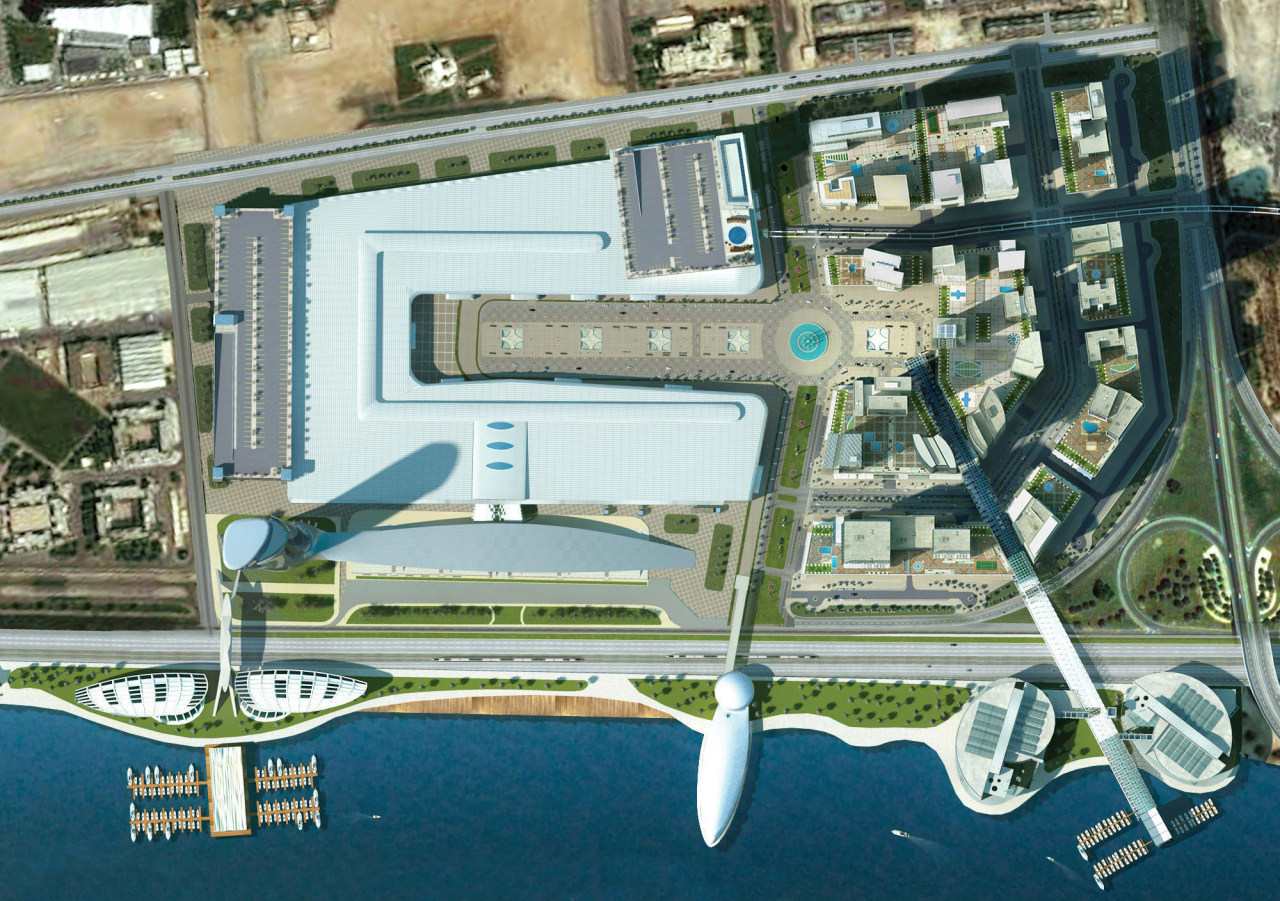
To provide a large, uninterrupted space, the roof in each hall spans 66m, and provides a clear height of 10m, making it suitable for sporting fixtures. The 66m width was based on the need to provide space for 3m-wide aisles and exhibit modules, which are typically 6m x 3m or 6m x 6m.
"The halls have been very carefully mapped out to ensure there is no wasted space," says Affleck.
The exhibition halls are also interconnected to provide venue flexibility and easy pedestrian access.
"To counter the aggressive climate, we have tried to minimise the walking distances outside the building," says Affleck. "Consequently, all the exhibition areas and facilities, including food and beverage outlets, are linked within the building."
Director Robert Meikle says that while the sheer scale of the project is immense, the key challenge in building the first exhibition halls in Phase 1 was the need to meet a strict timeline. There was just 16 months from the design conception to the opening of the completed building in time for the IDEX military exhibition.
The venue has more than 60 major exhibitions confirmed for this year, with many others booked for the five exhibition halls in Phase 2 of the development, which is scheduled for completion in September.
Phase 3 will see the construction of the 160m-high Capital Gate tower. At 35 storeys, the tower will accommodate a hotel, apartments and offices.
Credit list
Architect
Reception furniture
Civil, mechanical and electrical engineer
Story by: Colleen Hawkes
Home kitchen bathroom commercial design
9 tile shapes and finishes that think outside the square
Reflection and repose
Curves upon curves


